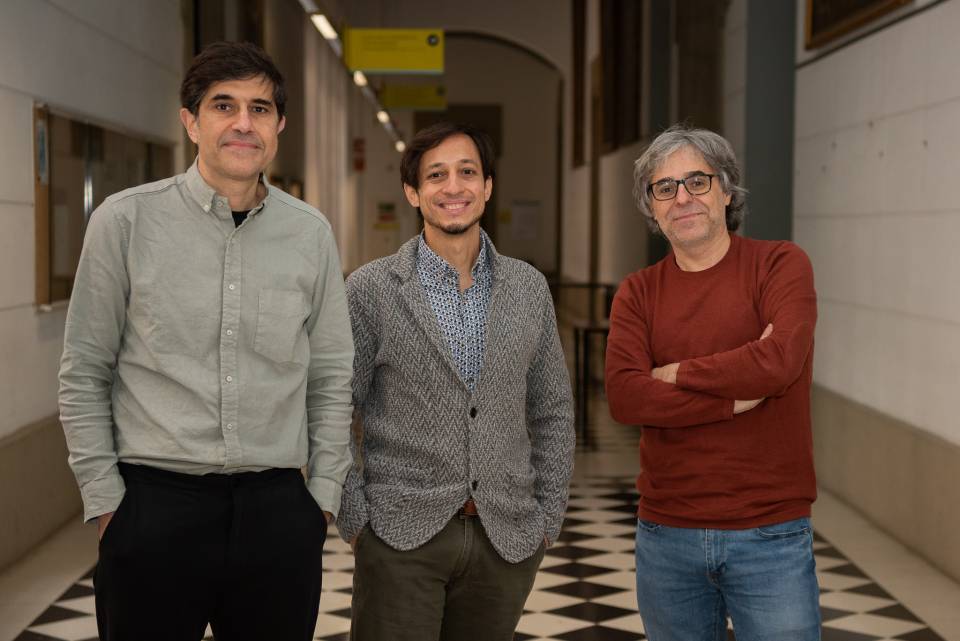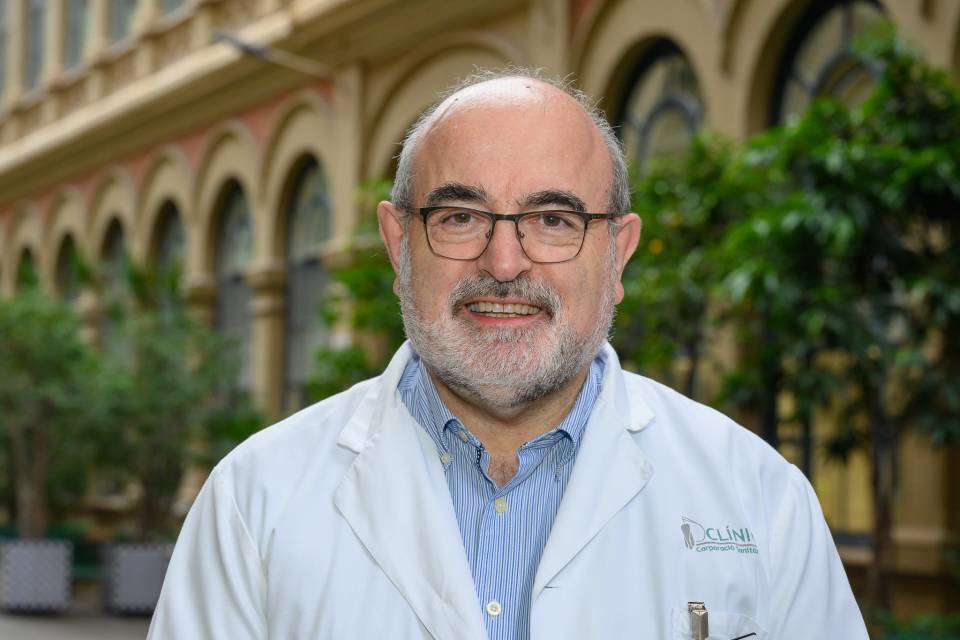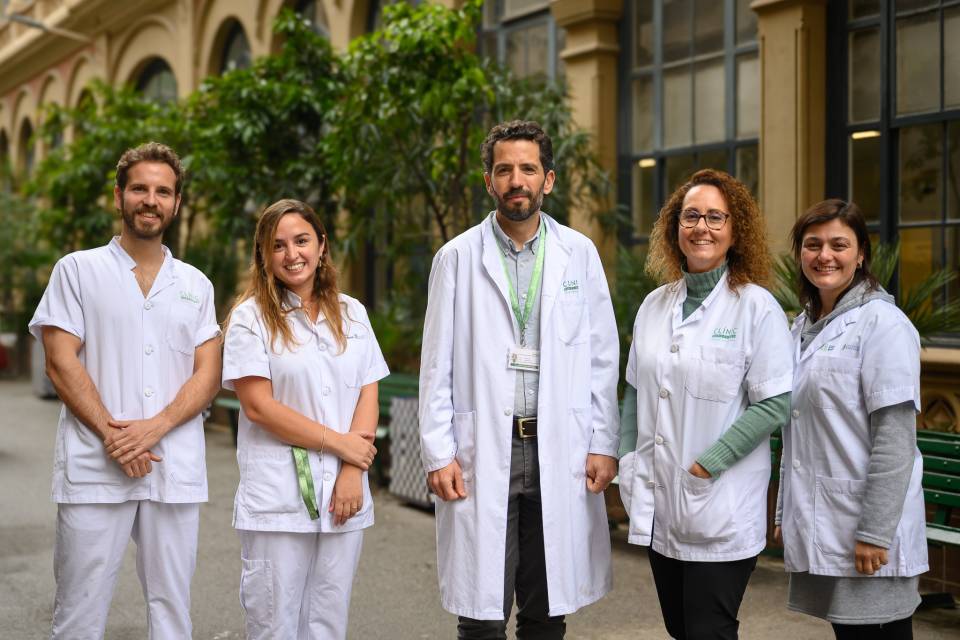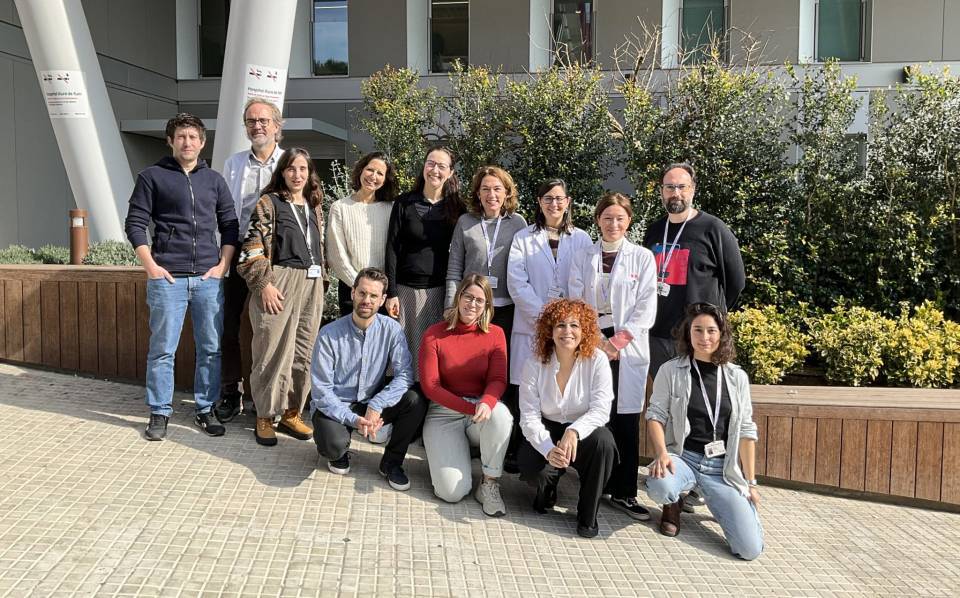Anxiety is a dynamic process, and continuous monitoring provides valuable information about its evolution. Researchers from the Hospital Clínic-IDIBAPS, IDIBELL and CIBERSAM have developed a smartphone app that allows anxiety to be assessed continuously and in real life. During the six months of the study, the app made it possible to monitor the evolution of anxiety with excellent reliability and validity.
The results of the use of the app were published in the journal Assessment. The studied was coordinated by Joaquim Raduà, head of the IDIBAPS Imaging of mood- and anxiety-related disorders (IMARD) research group and member of CIBERSAM, and Miquel A. Fullana, researcher in the same group. The first authors of the article are Lydia Fortea, pre-doctoral researcher in the IDIBAPS IMARD research group, and Miquel Tortella-Feliu, from the University of the Balearic Islands. Several members of the research team led by Carles Soriano-Mas, of IDIBELL and also a member of CIBERSAM also participated actively.
Anxiety is a normal and healthy reaction that is triggered when a person is faced with some sort of threat or danger. However, it can become an anxiety disorder when it is triggered in situations that are not usually threatening or dangerous, or persistently, to a point where it interferes significantly with daily life. One in five people will have an anxiety disorder in their lifetime.
Assess anxiety on an ongoing basis
Until now, in order to determine whether a person had a high level of anxiety, the health professional had to interview them or use a questionnaire to determine their degree of anxiety over recent weeks. However, this type of assessment has two major limitations. On the one hand, the person has to assess their “average” anxiety, whilst anxiety can vary over time. On the other hand, the person has to rely on their memories, which might be affected by current emotions or other factors.
“For some time, we have known that is it better to measure emotions on the spot, when they occur, in the context in which they occur and longitudinally, in other words for several days or weeks”, explains Joaquim Raduà. “Nowadays, this can be done easily with a smartphone”, he adds.
A smartphone-based app for continuous assessment
The researchers asked 99 people to rate their daily anxiety for six months, at different times of the day and on a scale of 0 to 100. This was done by means of a smartphone-based app with very simple questions such as, for example: “How anxious are you feeling right now?”.
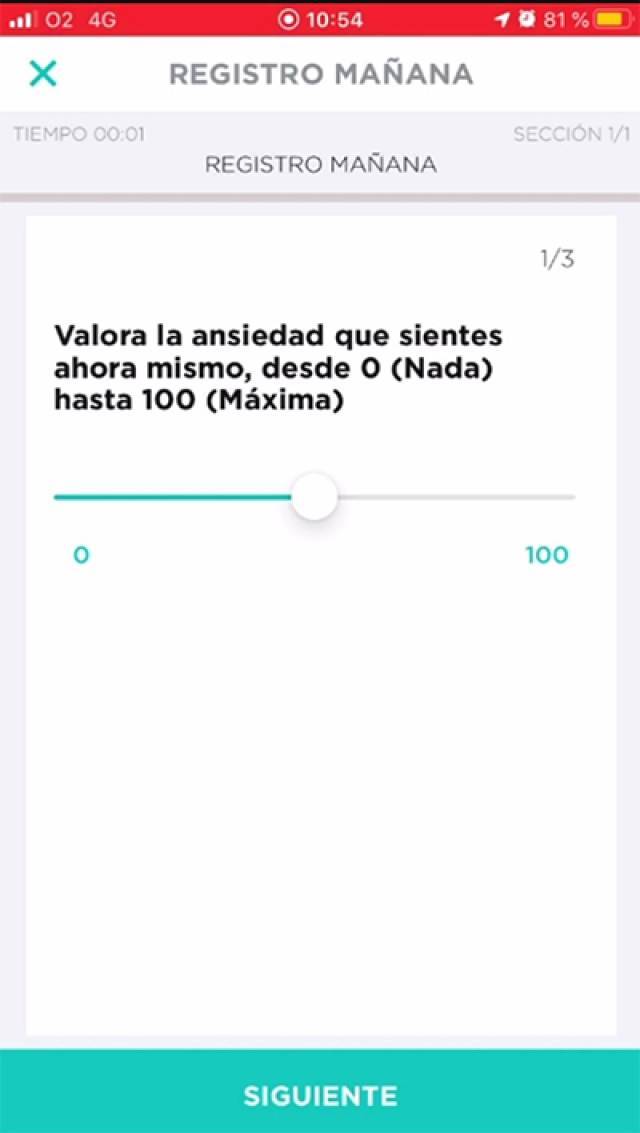
Screenshot of the application.
The analysis of the use of the app shows that it was very well accepted and followed up by the participants. “Most of the participants answered questions about their anxiety several times a day using their smartphone, and most of them did so regularly during the 6 months of the study ”, says Miquel A. Fullana.
The application showed excellent reliability (consistency). Moreover, it was seen that anxiety measured with a smartphone was compared with anxiety measured with other methods such as questionnaires, but that, “The measurements of anxiety on the spot, obtained with a smartphone, provided us with extra information. In other words, they allowed us to better predict who would suffer anxiety in the future than if we used questionnaires alone”, explains Carlos Soriano.
So, the studies that combine smartphone-based longitudinal assessments of anxiety with other methods of assessment deserve additional research and could offer new knowledge about human anxiety.
Anxiety during the 2020 lock-down
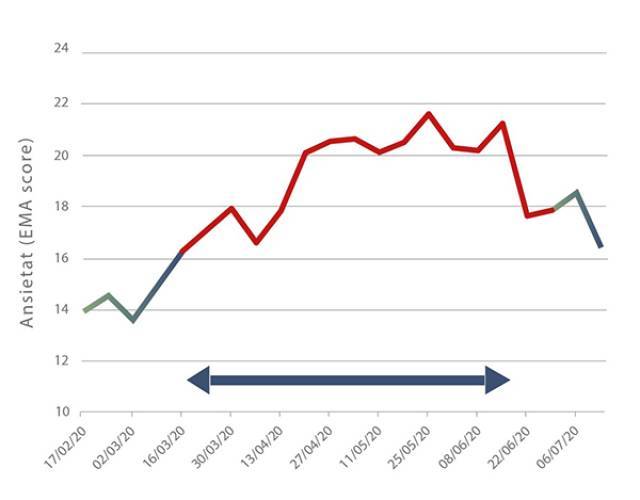
The graph shows the mean anxiety of all participants over the six months of the study.
Anxiety was measured with questions about physical sensations (e.g., muscle tension), negative thoughts (e.g., worries), and behaviors (avoiding going places or being in certain situations). An EMA score of 0 means that the participant has no anxiety. An EMA score of 100 means that the participant has maximum anxiety.
The app recorded a significant increase in anxiety during the 2020 lock-down (indicated by the blue arrow).
Study reference:
Lydia Fortea*, Miquel Tortella-Feliu*, Asier Juaneda-Seguí, Víctor De la Peña-Arteaga, Pamela Chavarría-Elizondo, Laia Prat-Torres, Carles Soriano-Mas, Sean P. Lane, Joaquim Raduà†, Miquel A. Fullana†

